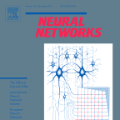In the domain of disordered photonics, the characterization of optically opaque materials for light manipulation and imaging is a primary aim. Among various complex devices, multi-mode optical fibers stand out as cost-effective and easy-to-handle tools, making them attractive for several tasks. In this context, we cast these fibers into random hardware projectors, transforming an input dataset into a higher dimensional speckled image set. The goal of our study is to demonstrate that using such randomized data for classification by training a single logistic regression layer improves accuracy compared to training on direct raw images. Interestingly, we found that the classification accuracy achieved is higher than that obtained with the standard transmission matrix model, a widely accepted tool for describing light transmission through disordered devices. We conjecture that the reason for such improved performance could be due to the fact that the hardware classifier operates in a flatter region of the loss landscape when trained on fiber data, which aligns with the current theory of deep neural networks. These findings suggest that the class of random projections operated by multi-mode fibers generalize better to previously unseen data, positioning them as promising tools for optically-assisted neural networks. With this study, in fact, we want to contribute to advancing the knowledge and practical utilization of these versatile instruments, which may play a significant role in shaping the future of neuromorphic machine learning.
翻译:暂无翻译





